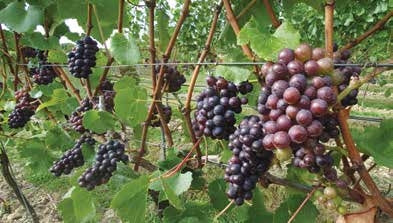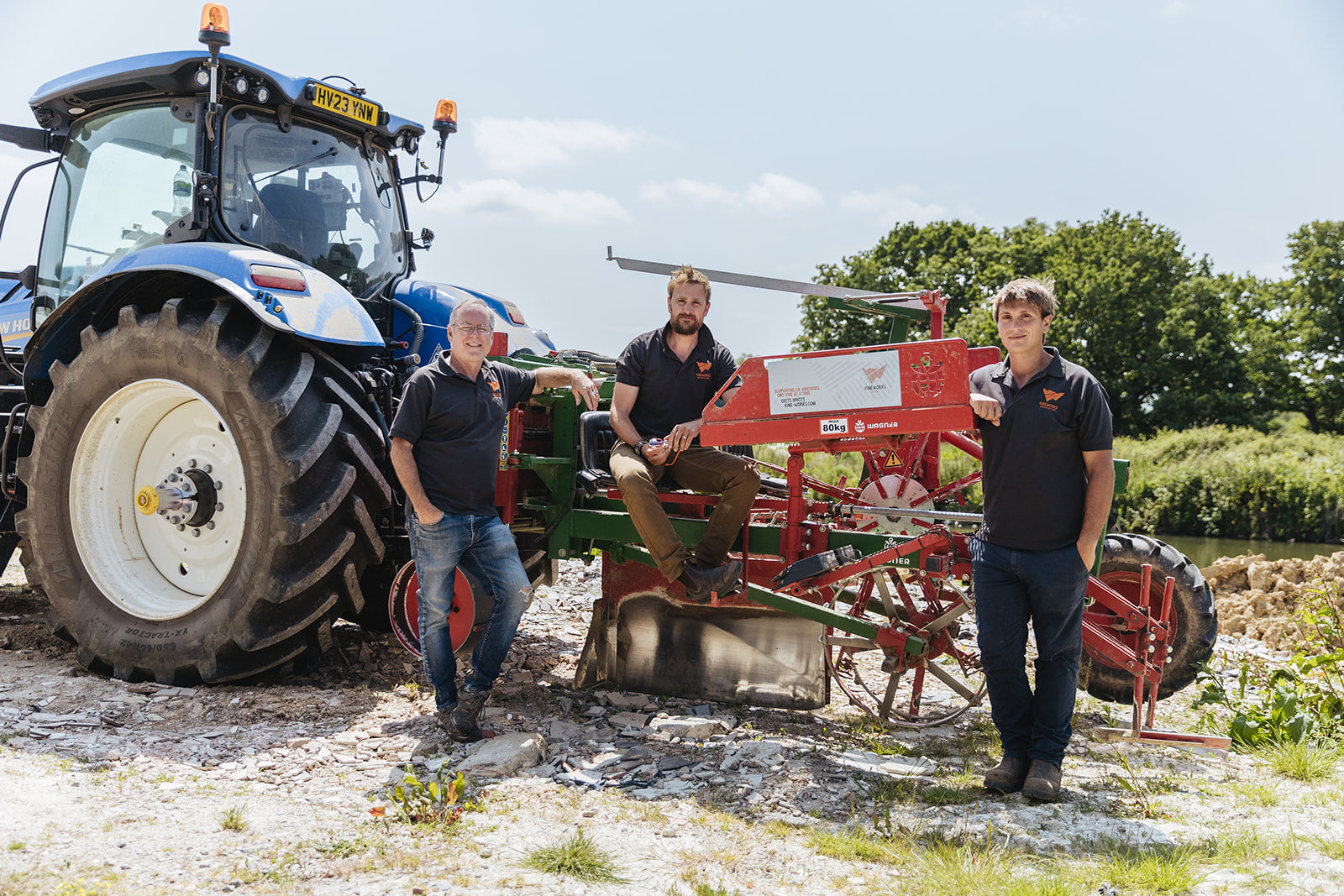

IMPROVING VINEYARD YIELDS
One question we are frequently asked at VineWorks is, “What should a vineyard yield per hectare?” The answer is not straightforward as yields vary significantly.
While some vineyards in the UK achieve high yields of 10 tonnes or more per hectare, the national average is less than 5 tonnes. This level of production often makes it challenging for vineyards to generate profits. To ensure the long-term success of a vineyard, it is crucial to understand the factors that influence yields and implement strategies to optimise them. These influences are diverse and many in number. However, we can break them down into three main categories:

Establishment
The decisions made during the establishment phase of a vineyard are crucial for its long-term success. Suitable site selection is essential, although it is rare to find a piece of land that meets all desired criteria. Conducting a thorough survey of the land with viticulture in mind enables informed decision-making. Ground preparation and matching the rootstock to the soil type promote balanced and healthy vine growth, leading to good yield levels. Careful consideration of grape variety selection is also important, taking into account budburst and ripening timings, which can affect a vine's susceptibility to frost and late-season weather conditions.
The decisions made during the establishment phase of a vineyard are crucial for its long-term success. Suitable site selection is essential, although it is rare to find a piece of land that meets all desired criteria. Conducting a thorough survey of the land with viticulture in mind enables informed decision-making. Ground preparation and matching the rootstock to the soil type promote balanced and healthy vine growth, leading to good yield levels. Careful consideration of grape variety selection is also important, taking into account budburst and ripening timings, which can affect a vine's susceptibility to frost and late-season weather conditions.
Planting density plays a critical role in yield per hectare. While higher vine density increases yield potential, it can also make site management more challenging. It is important to find an appropriate density and implement a trellis system that maximises vine number while allowing for even canopy growth. Planting vines too densely can lead to issues such as shaded canopies, increased disease pressure, reduced ripening, and limited yields. Finding the right balance is key.
Cultural Practices
The work carried out in the vineyard throughout the year has a significant impact on yields. Winter pruning is crucial for setting the stage for the upcoming season. Pruning should be done according to appropriate specifications, with a focus on modern gentle pruning methods. This approach ensures the selection of the most fruitful two-year-old wood as replacement canes and spurs. It also promotes an open renewal zone, allowing for better light penetration and high levels of flower initiation for the following year.
The work carried out in the vineyard throughout the year has a significant impact on yields. Winter pruning is crucial for setting the stage for the upcoming season. Pruning should be done according to appropriate specifications, with a focus on modern gentle pruning methods. This approach ensures the selection of the most fruitful two-year-old wood as replacement canes and spurs. It also promotes an open renewal zone, allowing for better light penetration and high levels of flower initiation for the following year.
Timely completion of all summer tasks is essential. For example, mistimed wire lifts, can cause excessive shading in the fruiting zone, increasing disease risk, reducing flowering ability, and limiting inflorescence initiation for the following year. Implementing a robust spray program in collaboration with an experienced agronomist helps protect vines from infections and ensures adequate nutrient supply. Providing sufficient nutrition during flowering is particularly important to support high yield levels. Keeping the undervine area weed-free and wellaerated reduces competition and enhances soil microbial activity. Regular soil analysis and efforts to improve soil health and fertility also contribute to better nutrient availability and retention.
Seasonal
Grape growing is inherently influenced by climate, but understanding and managing seasonal events can minimise their impact on vineyard yields. Frost-prone sites require an active frost defence plan, utilising tools such as bougies, frost fans, heaters, and cold air drains. Innovations like UV-emitting cables, which are currently being trialled in a vineyard managed by VineWorks, show promise in managing frost. Appropriate canopy management and timely spray applications help mitigate other seasonal weather effects. Late-season rain, frost, or hail can damage the crop significantly, making it crucial to react quickly and effectively during harvest. Grazing pests, like deer, can pose a threat to early spring growth in vineyards, often necessitating the installation of deer fencing. Monitoring certain insect populations is essential for implementing a robust integrated pest management system that utilises all available control and protection methods.
Grape growing is inherently influenced by climate, but understanding and managing seasonal events can minimise their impact on vineyard yields. Frost-prone sites require an active frost defence plan, utilising tools such as bougies, frost fans, heaters, and cold air drains. Innovations like UV-emitting cables, which are currently being trialled in a vineyard managed by VineWorks, show promise in managing frost. Appropriate canopy management and timely spray applications help mitigate other seasonal weather effects. Late-season rain, frost, or hail can damage the crop significantly, making it crucial to react quickly and effectively during harvest. Grazing pests, like deer, can pose a threat to early spring growth in vineyards, often necessitating the installation of deer fencing. Monitoring certain insect populations is essential for implementing a robust integrated pest management system that utilises all available control and protection methods.
Achieving optimal vineyard yields in the UK requires a comprehensive understanding of the factors that influence grape production and implementing effective strategies. Average yields of less than 5 tonnes per hectare poses challenges for profitability, making it crucial to address the diverse influences on vineyard yields. By understanding and implementing strategies within these three main categories, vineyard owners can work towards improving yields and ensuring the long-term success of their vineyards.



